|
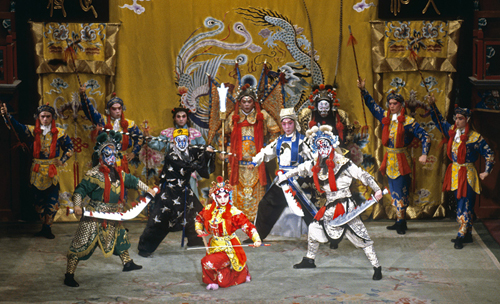
Beijing Opera cast
Colors The
colors of the performers’ painted faces symbolize the individual
characters’ qualities. Red, for example, represents loyalty and courage.
Purple stands for solemnity and a sense of justice, green for bravery
and irascibility.
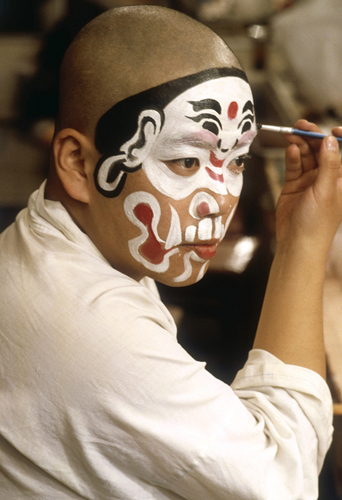
Painted face
Acrobatics Beijing
Opera is a form of “total theater” with singing, speech, mime, and
acrobatics that combine graceful gymnastics and movements from the
martial arts. Training is notoriously hard. Costumes are designed to
make the jumps seem more spectacular by billowing out as they spin.
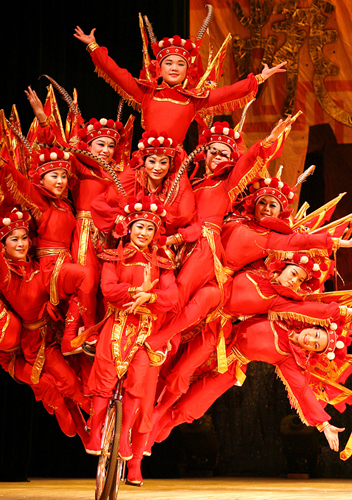
Acrobats
Musical instruments Despite
the dramatic visual elements of Beijing Opera, the Chinese say that
they go to “listen” to opera, not to see it. Typically six or seven
musicians accompany the dramatics. The stringed instruments usually
include the erhu, or Chinese two-stringed violin, while percussion includes instruments such as clappers, gongs, and drums. Sheng There are four main role types in Beijing Opera: sheng (male), dan (female), jing (painted face), and chou (clown). Sheng are divided into laosheng, who wear beards and represent old men, xiaosheng who are young men, and wusheng, who are the acrobats and whose roles are typically those of warriors. Dan
Dan are the female roles. Laodan are old ladies and caidan the female comedians, while wudan are the martial artists. The most important category, qingyi, usually play respectable and decent ladies in elegant costumes.
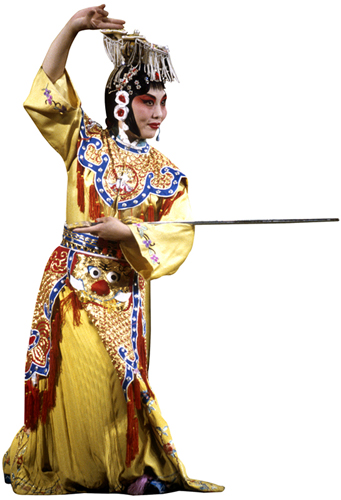
Dan
Jing
Jing
have stylized patterned, colored faces, and represent warriors, heroes,
statesmen, adventurers, and demons. Not only are these characters the
most striking looking but they also usually have the most forceful
personalities. Chou The chou
are the comic characters and they’re denoted by white patches on their
noses. Patches of different shape and size mean roles of different
character. It is the chou who keep the audience laughing. Mei Lanfang Mei Lanfang was the foremost male interpreter of the female role (dan)
during Beijing Opera’s heyday in the 1920s and 1930s. Traditionally all
female roles were played by male actors, although no longer. Repertoire The
traditional repertoire includes more than 1,000 works, mostly based on
popular tales. Modern productions aimed at tourists often include
English-language displays of the text. Monkey Clever,
resourceful, and brave, Monkey is one of the favorite characters in
Beijing Opera. He has his origins in classic Chinese literature.
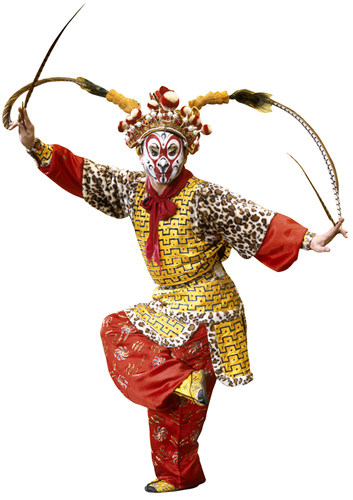
Monkey
Top 10 Beijing Opera Venues
Beijing Traditional Opera Theater Highlights shows in English. Chang’an Grand Theater Daily two-hour performances of mostly complete operas. 7 Jianguo Men Nei Dajie 6510 1309 6510 1310
Mei Lanfang Grand Theater This steel-and-glass theater sits over 1,000 people. 32 Ping’Anli West St 5833 1388
East Pioneer Theater Occasional two-hour highlights shows. Hu Guang Guildhouse Daily one-hour highlights shows. Lao She Teahouse Daily 90-minute variety shows that include Beijing Opera. 3 Qian Men Xi Dajie 6303 6830
Li Yuan Theater Daily 80-minute highlights shows. Mansion of Prince Gong Summer performances only . 17 Qianhai Xi Jie 6616 8149
De Yun She A famous teahouse hosting traditional Chinese cross-talk shows Tue–Sun. Zheng Yi Temple Theater Daily two-hour performances. 220 Xiheyan Qian Men 8315 1649
|